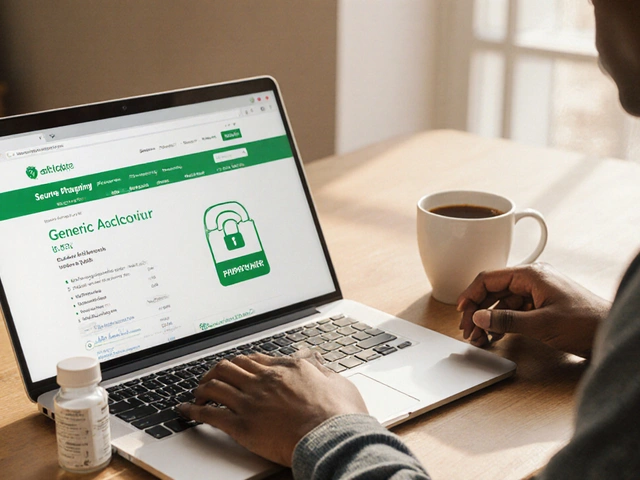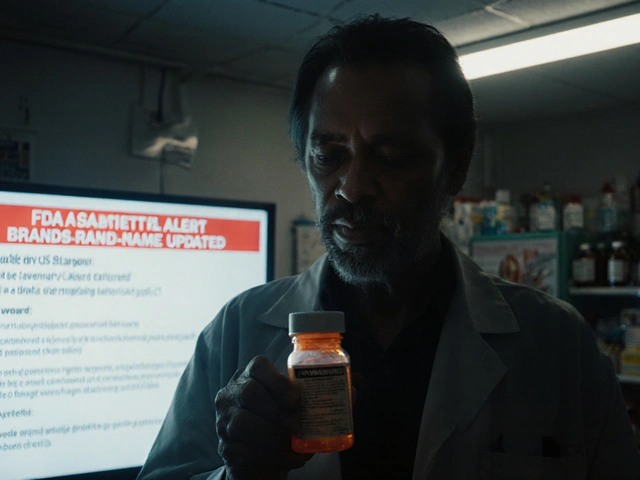Norvasc Side Effects – What You Need to Know
If you’ve been prescribed Norvasc (generic name amlodipine), you probably wonder what it might do to your body beyond lowering blood pressure. The good news is most people feel fine, but a few side effects pop up for some users. Below we break down the typical complaints, the rarer problems, and practical steps you can take.
Common Norvasc Side Effects
The most frequent issues are mild and often fade as your body adjusts. Expect one or more of these:
- Dizziness or light‑headedness: This happens especially when you stand up fast. Try getting up slowly, staying hydrated, and avoiding alcohol.
- Swelling (edema) in the ankles or feet: Fluid can collect because amlodipine relaxes blood vessels. Elevating your legs for a few minutes each day helps reduce the puffiness.
- Flushing or warm feeling: A sudden warmth, mostly on the face and neck, is common in the first week.
- Headache: Small blood‑vessel changes can trigger a headache. Over‑the‑counter pain relievers work for most people.
- Fatigue or tiredness: Some feel more sleepy when they start the medication. Give it a couple of weeks; the fatigue usually lessens.
If any of these symptoms bother you, talk to your pharmacist about timing your dose (many take it at night) or adjusting lifestyle habits like salt intake and exercise.
When to Seek Medical Help
Most side effects aren’t dangerous, but a few signal that you need a doctor’s advice right away:
- Severe chest pain or pressure: This could mean your heart isn’t getting enough oxygen.
- Rapid heartbeat (palpitations) that feel irregular: Unusual racing can be a sign of an interaction with another drug.
- Sudden, unexplained weight gain or swelling that spreads beyond the ankles: This might point to heart failure.
- Persistent dizziness that leads to falls: It could mean your dose is too high.
- Allergic reactions – rash, itching, swelling of face or throat, trouble breathing: Stop the medication and get emergency care.
Don’t wait for symptoms to worsen. Call your doctor if any of these appear, even if they seem mild at first.
Managing side effects yourself
Simple habits can make a big difference. Keep a daily water intake of about 2 liters unless you have kidney restrictions; this helps the body flush excess sodium that contributes to swelling. Cut back on salty snacks and processed foods. Light exercise, like walking, improves circulation and reduces fluid buildup.
When you start Norvasc, write down any new feelings in a notebook – date, time, intensity. This record makes it easier for your doctor to decide if the dose needs tweaking or if another blood‑pressure drug might suit you better.
Lastly, never stop taking Norvasc abruptly. Even if side effects are annoying, quitting suddenly can spike your blood pressure and cause headaches. Always discuss any changes with a healthcare professional first.
Understanding what to expect from Norvasc puts you in control of your treatment. Most people stay on the medication without major issues, and when problems arise, they’re usually manageable with a few adjustments or a quick chat with your doctor.
Norvasc Uses, Dosage, Side Effects, and Important Facts for Blood Pressure Control
Norvasc is a widely prescribed medication for high blood pressure and chest pain (angina). This article breaks down how Norvasc works, who should use it, what side effects to expect, and tips for getting the most out of your treatment. You'll find specific advice, facts, and relatable stories to help make sense of this common medication. Learn about dosage, interactions, and what daily life on Norvasc might look like, so you can take control of your blood pressure with confidence.
About
Health and Medicine
Latest Posts


Buy Cheap Generic Zovirax Online - Safe Guide & Best Prices
By Orion Kingsworth Sep 28, 2025

OTC Allergy Relief: How to Choose the Right Antihistamine and Dose for Your Symptoms
By Orion Kingsworth Nov 22, 2025

FDA Safety Alerts: Understanding Communications About Generic Drug Problems
By Orion Kingsworth Nov 7, 2025

